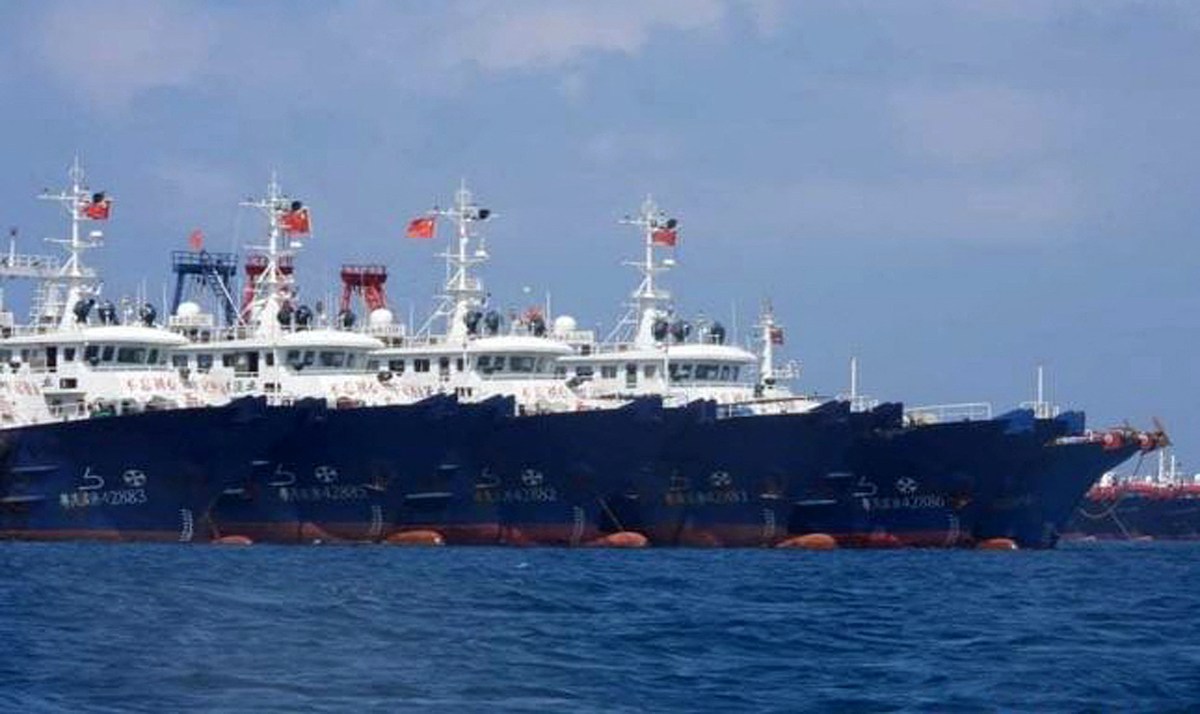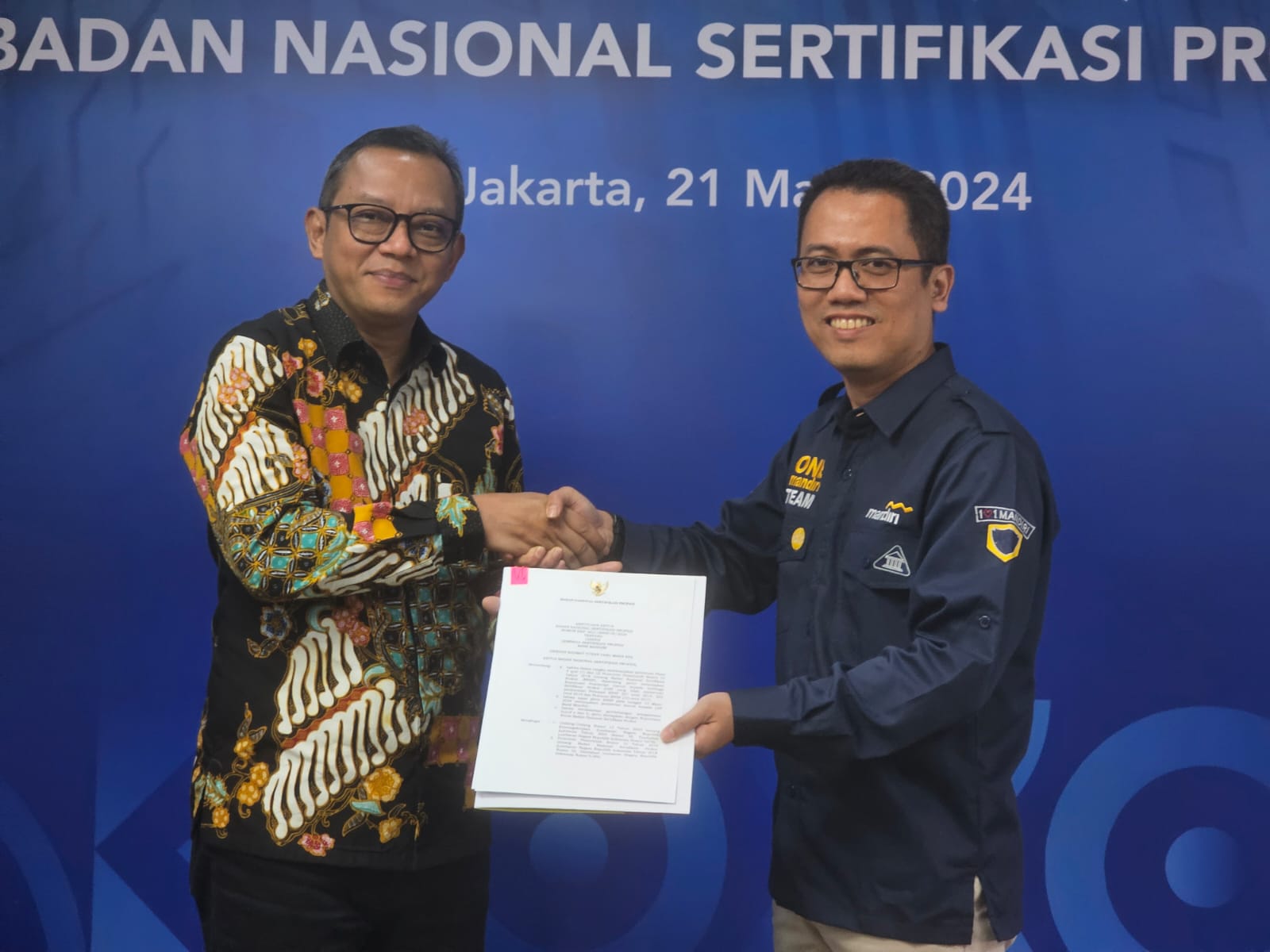[ad_1]
MANILA – China is rapidly expanding its activities in Manila-claimed waters in the South China Sea, maritime moves that come amid lingering uncertainties in the US-Philippine strategic alliance.
This week, the Philippines claimed as many as 183 suspected Chinese maritime militia vessels are now swarming the Philippine-claimed Whitsun Reef, a shallow coral region located around 175 nautical miles from the western Philippine province of Palawan. The feature is well within the Philippines’ exclusive economic zone (EEZ). Â
Beijing has strongly dismissed Manila’s claims of intrusions. China’s embassy in Manila warned against “[a]ny speculation in such helps nothing but causes unnecessary irritation†and “hoped that the situation could be handled in an objective and rational manner.â€
The US Embassy in Manila, however, was quick to declare, “We stand with the Philippines, our oldest treaty ally in Asia†and accused China of intimidating rival claimant states in the South China Sea through its armada of maritime militia forces.
Critics say the newly escalating tensions in the South China Sea have exposed the failure of Philippine President Rodrigo Duterte’s appeasement strategy towards China.
It also represents a major test for the Joe Biden administration, which has promised to push back against Beijing’s rising assertiveness in Asian waters through revitalized alliances and expanded naval deployments.
The Philippines has been at loggerheads with China over their South China Sea disputes for well over a decade.
Following a months-long naval standoff over the Manila-claimed Scarborough Shoal in 2012, Chinese maritime forces have effectively occupied the fisheries-rich land feature, which falls within the Philippines’ EEZ.
Just a year later, China commenced with massive reclamation activities across disputed land features from the Paracels in the north to the Spratlys in southern regions of the South China Sea.
In response, then-President Benigno Aquino III doubled down on security cooperation with Washington while initiating an international arbitration case against China under the aegis of the United Nations Convention on the Law of the Sea (UNCLOS).
Upon ascension to power in 2016, the Beijing-friendly Philippine President Rodrigo Duterte downplayed the maritime disputes and effectively shelved the Philippines arbitration award victory at The Hague against China.
The controversial Filipino leader maintained that by being “meek and humbleâ€, the Philippines could secure rich concessions from China, including in the disputed waters.
Emboldened by Manila’s acquiescence, Beijing has rapidly militarized disputed land features by deploying sophisticated military hardware to newly-reclaimed areas in the South China Sea.
Since 2019, however, the Asian powerhouse has shifted to the third phase of its domination strategy by expanding the deployment of maritime militia forces along with heavily-armed coast guard vessels in the area.
China’s increasing reliance on “gray zone†tactics to push its claims in the area culminated in the sinking of a Philippine fishing vessel by a suspected Chinese militia vessel in the Reed Bank area in mid-2019.
Eager to maintain warm ties with Beijing, however, Duterte shrugged off the event as a “little maritime incidentâ€, broadly echoing China’s diplomatic position.
Moreover, the Philippine leader threatened to scrap a vital defense deal with Washington amid growing disagreements over human rights issues.
Despite Manila’s subsequent decision to suspend the abrogation of the Philippine-US Visiting Forces Agreement (VFA), which facilitates large-scale military exercises between the two mutual defense treaty allies, the future of the alliance is still in limbo.
Duterte’s threats and opposition have undermined America’s efforts to deter further Chinese incursions by prepositioning weapons and hardware in strategic Philippine bases close to the South China Sea.
Frustrated with Manila’s prevarications, the Biden administration’s newly-released interim National Security Strategic Guidance doesn’t directly mention the Philippines as an ally, a major departure from previous US administrations’ public pronouncements and policy papers.
Duterte’s incendiary rhetoric, including his threat to scrap the VFA in absence of large-scale American strategic payments and supplies of Covid-19 vaccines, has only exacerbated uncertainties over the future of the alliance.
China has been quick to exploit the strategic vacuum by expanding its footprint in adjacent waters. That’s been seen in the announcement of new administrative regions in the South China Sea to the passage of a new maritime law that empowers its coast guard forces to use force against rival claimant states.
China’s deployment of an armada of maritime militia forces to Philippine waters is just the latest manifestation of its so-called “cabbage strategyâ€, which relies on a combination of regular “gray hull†warships as well as heavily-armed coast guard and para-military vessels roaming the South China Sea basin with impunity.
China’s maritime militia forces are particularly crucial in the country’s overall strategy since they can intimidate fishing and energy exploration activities by rival claimant states short of triggering direct armed clashes.
Operating under the guise of fishing in international waters, China’s armada of militia forces have also been preventing Southeast Asian claimants such as the Philippines from augmenting their civilian and military facilities in the Spratlys by harassing the latter’s supply lines in the area.Â
Contrary to Duterte’s generally meek position, his top cabinet members and legislative allies have taken a dramatically tougher stance against China’s intrusions into Philippine-claimed waters.
Philippine Foreign Affairs Secretary Teodoro Locsin Jr recently filed a formal protest against Chinese militia forces swarming of Philippine-claimed areas.
Philippine Defense Secretary Delfin Lorenzana has recently called on China to “stop this incursion and immediately recall these boats violating our maritime rights and encroaching into our sovereign territory.â€Â
The Armed Forces of the Philippines, which maintains robust ties with the Pentagon and serves as a major veto-player in the country’s foreign and defense policies, also recently released a statement reassuring the Filipino people “[we will] not renege from our commitment to protect and defend our maritime interest within the bounds of the law.â€
Duterte’s top allies in the legislature have also called for more decisive responses, with veteran Senator Richard Gordon even cautioning the president against talking to the Chinese ambassador.
“[It is] in effect a rebuff to His Excellency The President of the Republic of the Philippines. We’ll appear lame,†Gordon said over a tweet, indirectly criticizing Duterte’s often warm and intimate exchanges with China’s envoys.
The senator, who was among prominent legislators that legally challenged Duterte’s threat to unilaterally abrogate the VFA last year, has called on China to “contribute to peace and stability in the region, and not create an impression of a bullying neighbor.â€
“The Chinese government’s coercive and destabilizing actions in the West Philippine Sea and the South China Sea are acts that belie its pronouncements of friendship and goodwill and affinity with the Filipino people,†he added.
China’s Foreign Ministry has downplayed the incident by claiming that “due to the sea conditions, some Chinese fishing boats have taken shelter from the wind near the Whitsun Reef. I think it is very normal and hope all parties can look at it rationally.â€
The US Embassy in Manila, however, rejected China’s official narrative, saying in a statement that “Chinese boats have been mooring in this area for many months in ever-increasing numbers, regardless of the weather.â€
The Biden administration criticized China’s latest maritime moves by claiming the latter’s “maritime militia†forces have been engaged in a campaign to “intimidate, provoke, and threaten other nations, which undermines peace and security in the region.â€
Despite those protests, there has been no sign of a Chinese militia force withdrawal from the contested area, which some in the Philippines view as the strategic cost of lingering uncertainties in the Philippine-US alliance.
[ad_2]
Source link














